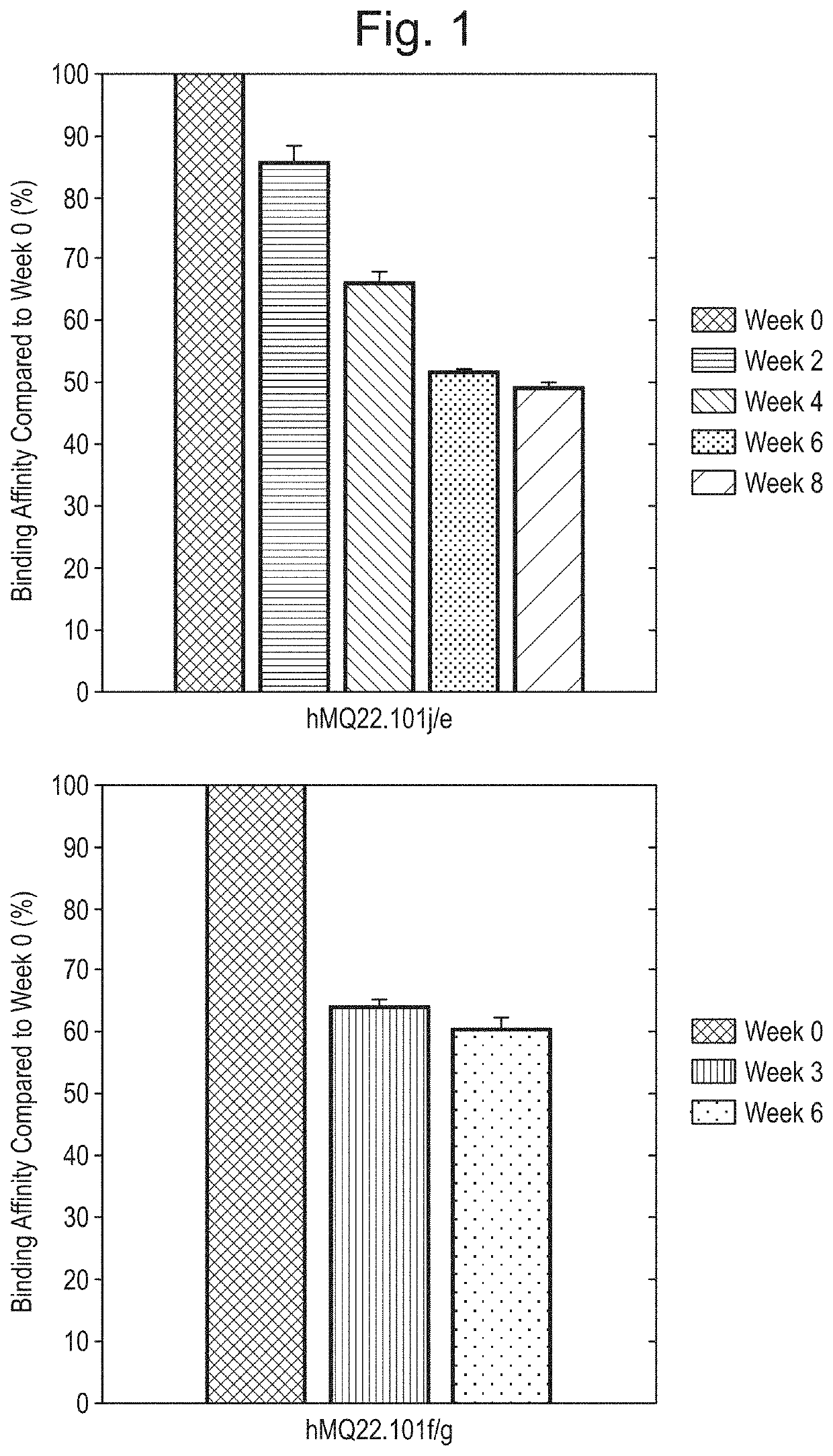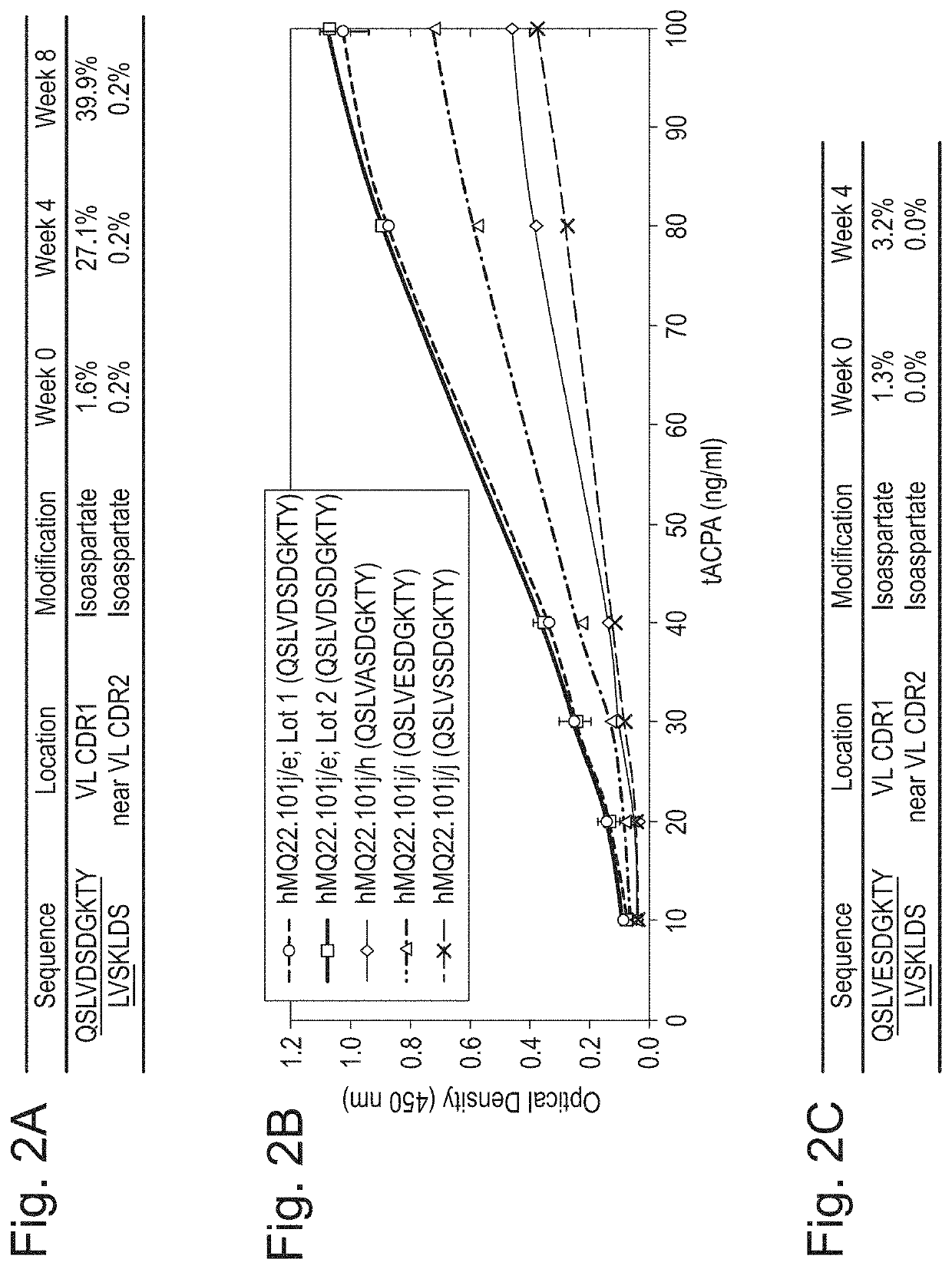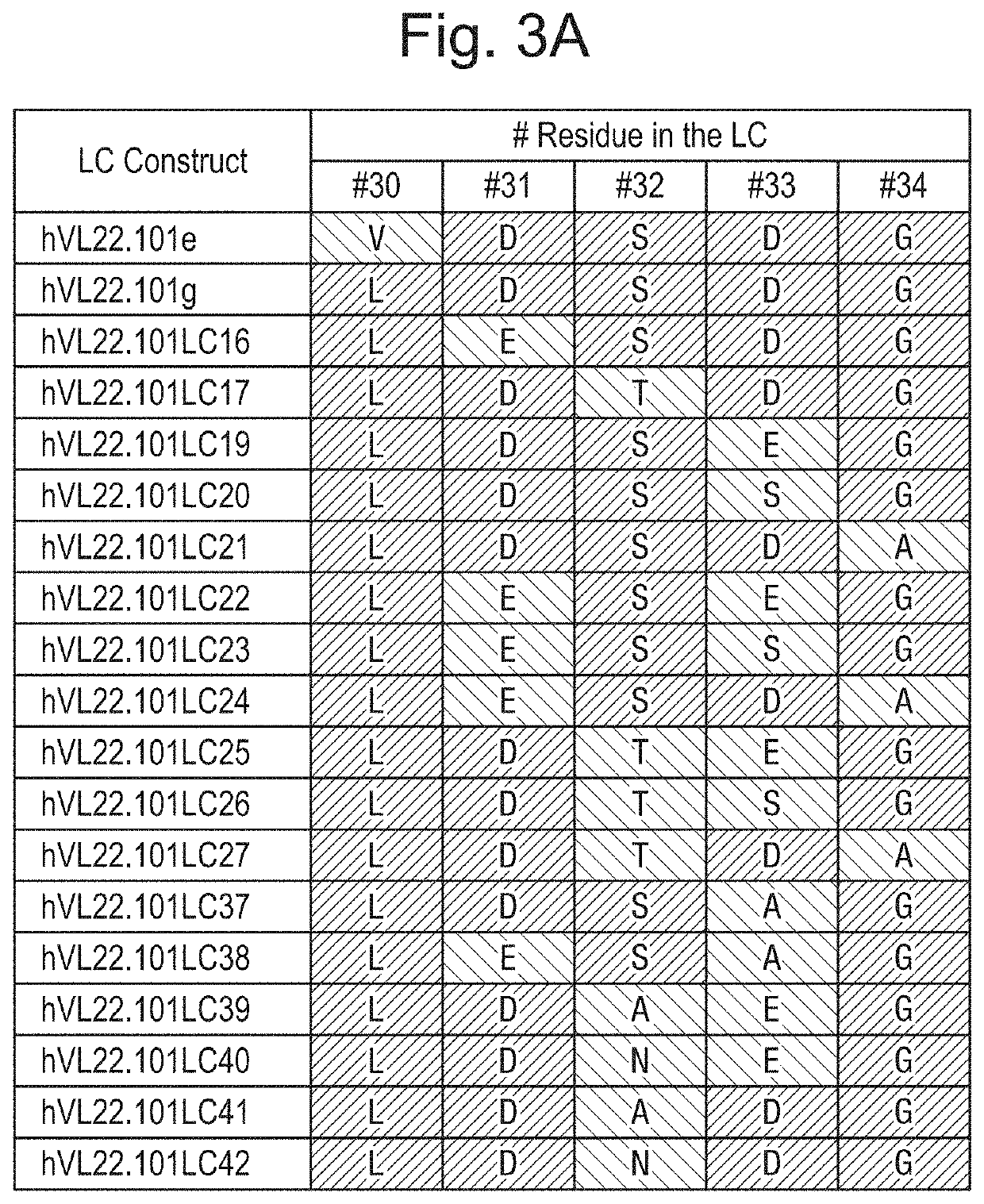Antibodies binding to citrullinated histone 2a and/or 4
a technology of citrullinated histone and anti-binding fragment, which is applied in the field of anti-binding fragments of citrullinated histone 2a and/or 4, can solve the problems of nets, inflammatory conditions, and other problems, and achieve the effects of reducing the number of nets
- Summary
- Abstract
- Description
- Claims
- Application Information
AI Technical Summary
Benefits of technology
Problems solved by technology
Method used
Image
Examples
example 1
ed Stability Testing of hMQ22.101j / e and hMQ22.101f / g
[0271]0.75 ml Aliquot (glass tubes) containing hMQ22.101j / e (12.5 mg / ml) or hMQ22.101f / g (3.31 mg / ml) in 25 mM Tris-HCl, pH 8.0 were stored at 37° C. each for 8 weeks. Each week several 10 μl and 20 μl samples were withdrawn from each glass tube under aseptic conditions and stored at −80° C. until further analysis (ELISA and mass spectrometry). hMQ22.101j / e samples from week 0, 2, 4, 6 and 8, and hMQ22.101f / g samples from week 0, 3 and 6 were subjected to an in house-validated CMC ELISA. 96-well ELISA plates were coated with neutravidin (0.1 μg / well) by overnight incubation at 4° C. Wells were washed 5 times with PBS-Tween20 (PBS-T) and blocked by a 2 hour incubation with PBS-T+1% Bovine serum albumin (BSA) at room temperature (RT). After 5 more washes with PBS-T, wells were incubated for 1 hour at RT with a histone-derived peptide (SEQ ID NO 18: SGXGKQGGKARA), containing a citrulline (X) at position 3 and a C-terminal biotin (40 ...
example 2
trometry Analysis of hMQ22.101j / e Accelerated Stability Samples
[0274]The cause of the reduction in binding affinity of the hMQ22.101j / e antibody over time was investigated. hMQ22.101j / e has several potential aspartate isomerisation sites in or near the VL CDR regions (CDR1 and CDR2). The aim of this Example was to determine the sensitivity of the aspartate residues towards isomerisation by liquid chromatography (LC) —mass spectrometry (MS)-based peptide mapping.
[0275]Prior to digestion, 50 μg of each accelerated stability sample (week 0, 4 and 8) was subjected to desalting, reduction with dithiothreitol and alkylation using iodoacetamide. Following reduction and alkylation, the samples were digested for 18 hours at 37° C. using sequencing grade modified trypsin (Promega) in an enzyme / protein ratio of 1 / 50 (w / w). Digests were stored at −20° C. until LC-MS analysis. Trypsin is a serine protease that specifically cleaves at the C-terminus of either arginine or lysine. Analysis of trypt...
example 3
Three VL CDR1 Aspartate-Mutated hMQ22.101 Antibodies
[0278]It was then investigated whether deletion of the non-germline isomerisation site in CDR1 of VL prevented isomerisation. DNA of three hVL22.101y domains, including a single aspartate mutation in CDR1 at amino acid position 31 (L:Asp31) each, were synthesized by GeneArt. L:Asp31 was mutated into an Alanine, Glutamine or Serine based on amino acid similarities such as 1) size, 2) polarity and 3) charge. These aspartate-mutated VL domains were cloned into a mammalian expression vector encoding a full-length human light chain. Subsequently, these light chain constructs (hVL22.101h, hVL22.101i and hVL22.101j) all in combination with a full-length human heavy chain construct (hVH22.101j) were used to transiently transfect HEK293 cells for the production of hMQ22.101j / h, hMQ22.101j / i and hMQ22.101j / j, respectively. Full-size antibodies were purified from culture supernatants using MabSelect SuRe affinity columns and subsequently buff...
PUM
| Property | Measurement | Unit |
|---|---|---|
| concentration | aaaaa | aaaaa |
| temperature | aaaaa | aaaaa |
| concentration | aaaaa | aaaaa |
Abstract
Description
Claims
Application Information
 Login to View More
Login to View More - R&D
- Intellectual Property
- Life Sciences
- Materials
- Tech Scout
- Unparalleled Data Quality
- Higher Quality Content
- 60% Fewer Hallucinations
Browse by: Latest US Patents, China's latest patents, Technical Efficacy Thesaurus, Application Domain, Technology Topic, Popular Technical Reports.
© 2025 PatSnap. All rights reserved.Legal|Privacy policy|Modern Slavery Act Transparency Statement|Sitemap|About US| Contact US: help@patsnap.com



